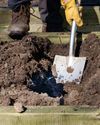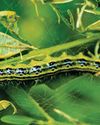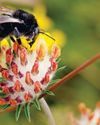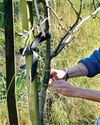
UNLESS you have studied horticulture or botany to any level, you may think of plants as being basically stable in form and structure. How they start is how they carry on, right? Not necessarily. Plants do change sometimes, but this can be so subtle that you hardly register it because the change takes place over a long period of time.
You are probably familiar with variegated plants, but many of these have been specially selected from a mutation (or sport) of a plant that originally had entirely green leaves or flowers of a single colour. They are chosen because the new growth is at least as desirable as the original and can be reproduced in new generations by taking cuttings.
Natural changes
Most of these changes occur naturally and are referred to by botanists as being a chimaera, the formation of a shoot or plant that has developed two or more genetically different types of cell, resulting in a change of leaf shape or colouring, changes to flower shape or colouring or a change of growth habit. This change in growth habit is frequently seen in roses, where a number of bush roses, both hybrid tea and floribunda types, have mutated to form plants of much more vigorous, upright growth.
Chimeral flowers
Esta historia es de la edición May 13, 2023 de Amateur Gardening.
Comience su prueba gratuita de Magzter GOLD de 7 días para acceder a miles de historias premium seleccionadas y a más de 9,000 revistas y periódicos.
Ya eres suscriptor ? Conectar
Esta historia es de la edición May 13, 2023 de Amateur Gardening.
Comience su prueba gratuita de Magzter GOLD de 7 días para acceder a miles de historias premium seleccionadas y a más de 9,000 revistas y periódicos.
Ya eres suscriptor? Conectar

To dig or not to dig?
Should we be carrying out a full dig on plots now? Bob considers the pros and cons of the 'autumn dig' debate

The box ball blues
As if his beleaguered box hadn't already taken a beating, Toby now has to deal with some hungry box caterpillars

Save your own seeds
Masterclass on: seed saving

Strange sightings
Three unusual insects turn up in Val's garden in one day

A bolt from the blue!
Cornflowers are perfect for garden and vase

Winter moth prevention
Ruth shows you how to avoid maggoty tree fruits

Create a winter container
There are as many options as in summer

Lightweight gardening tools
AS well as being good for our mental health, gardening is also great exercise.

Autumn price round-up
AG finds better bargains in lesser-known brands

Rudbeckias
Rudbeckias are ideal for sunny summer patios and borders, with some able to survive our coldest winters